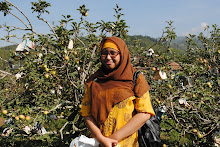Produces sharp images razor-sharp photography is the desire of many lovers, and a variety of camera features and additional accessories are created to help us produce these sharp images. From a tripod, stabilizer (lens or camera) to the photo editor software is equipped tool to sharpen the final image.
This article will summarize a few tips for your sharper photos, please:
1. How to hold the camera
How to hold the camera very influential on the stability of the camera (read: the sharpness of the image), read how to hold the camera is good.
2. Shutter Speed.
If you speed up the shutter speed, then you will get a sharp photo. Remember the standard rules for sharp images when you are shooting handheld: "use a shutter speed faster than your lens focal length." Look penjabarannya:
* If the length of your lens 50mm, potretlah with a shutter speed of 1 / 60 second or faster
* If the length of your 100mm lens, use a shutter speed of 1 / 125 second or faster
* If the length of your 200mm lens, use a shutter speed of 1 / 250 second or faster
3. Aperture
Aperture affects depth of field (focus area in your photo). Reducing the aperture (increase the number, for example you choose f/22) will add depth of field, meaning a sharp areas in the bigger picture will include objects near and far, so the sharpness of the picture as a whole actually decreased.
So do otherwise, choose a large aperture (small number, eg f / 4), then you will focus sharply only near the focal area. Choosing a large aperture that lets you get a faster shutter speed.
4. ISO
Adding ISO will speed up the shutter speed and lets you choose a larger aperture. If you take pictures in the room, larger was the ISO, but do not overdo it (ie: select ISO 600 for shooting inside the house). select the ISO is too high (above 800), can cause noise (small black spots) in an image starts to look.
5. Focus
Do not just believe with autofocus camera, check carefully to use the eyes in the eyes of your focal point is located. When photographing the face at close range, make sure the focus fell diarea eye. When photographing an object, make sure the focus was there where you want the sharpest area. Autofocus camera could be wrong and it dropped the focus in addition to objects that you want.
6. Lens
If you happen to have a SLR camera, choose the best lens you can buy. The lens of good quality can drastically improve the sharpness of your photo. KIT lens that is usually offered for sale as a complete package with the camera is usually the quality of his effort. My advice, if you are just going to buy a SLR camera, buy it separately from the camera (body only) and the lens. Do not buy a package of KIT. Lens with good quality is usually characterized by a large aperture (eg f/2.8).
7. Sweet Spot Lens
The lens has its sweet spot respectively. Sweet spot is certain where the lens aperture will produce the sharpest images. Sweet spot lens two stops are usually located above the maximum limit the ability of the lens aperture. For example, f/2.8 lens for the sweet spot was on the f/5.6. So if you use f/5.6 aperture lens taking pictures with it, your photo will be sharp razor-sharp.
8. Tripod
Tripod is impractical and inconvenient, but if you are "willing to" bring it, you'll get sharper photos. Especially if you want to generate HDR or panoramic photos, just let it go bring a tripod.
source:: http://belajarfotografi.com

















